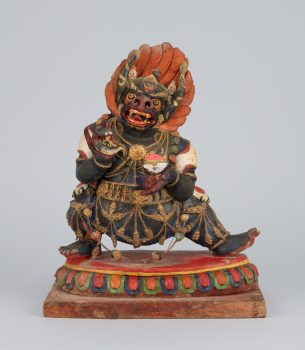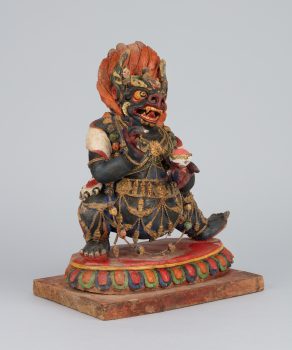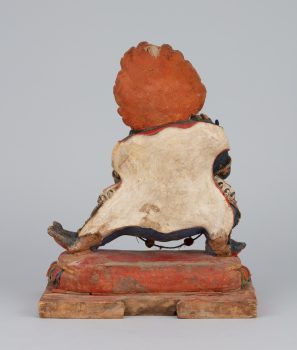Mongolia
ca. 19th century
A skull cup is an attribute of tantric deities and is usually paired with a curved knife. It can symbolize a mind filled with the bliss of realizing the true nature of reality.
Mongolia
ca. 19th century




Vajrabhairava is a prominent deity in the Sakya and Gelug Tibetan Buddhist traditions. He is considered to be the wrathful emanation of the Bodhisattva of Wisdom, Manjushri. He took on this form by reflecting back the terrifying nature of the Lord of Death, Yama, thus overwhelming and subduing Yama, who became a protector of the Buddhist faith. In Vajrabhairava, Yama’s form is topped by the head of Manjushri, signifying the deity’s true nature.
A religious movement that originated in India around the fifth to seventh century with sacred writings and esoteric teachings and practices transmitted from teacher to student through initiation. These remain an important part of Hinduism and Buddhism today.
The end of this life marked by the cessation of bodily functions followed by decay. According to Buddhism, after death consciousness transitions to an intermediate state known as the bardo before embarking on another life.
A contemplative practice in which a person uses concentration and visualization to achieve aims such as transforming the mind and generating feelings of compassion. Techniques include focusing on breathing or visualizing oneself as a deity.
Protectors of Buddhist teachings who destroy obstacles that impede the path to enlightenment. The more frightening and gruesome their appearance, the greater their power.
Mongolians have been widely active in the Tibetan Buddhist world, playing a key role in Tibetan culture, politics, and relations with China. In the 13th century, the Mongol Empire—the largest contiguous empire in world history—facilitated the spread of Tibetan visual culture.
Get the latest news and stories from the Rubin, plus occasional information on how to support our work.